Today Current Affairs: 9th September 2021 for UPSC IAS exams, State PSC exams, SSC CGL, State SSC, RRB, Railways, Banking Exam & IBPS, etc
Table of Contents
13th BRICS Summit:
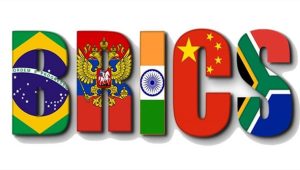
As part of India’s ongoing Chairship of BRICS in 2021, Prime Minister Shri Narendra Modi will chair the 13th BRICS Summit on 9 September 2021 in virtual format.
- The theme for the Summit is ‘BRICS@15: Intra-BRICS cooperation for continuity, consolidation and consensus’.
- India had outlined four priority areas for its Chairship. These are Reform of the Multilateral System, Counter Terrorism, Using Digital and Technological Tools for achieving SDGs and Enhancing People to People exchanges.
- This is the second time Prime Minister Modi will be chairing the BRICS Summit. Earlier he had chaired the Goa Summit in 2016.
Improved Air Quality Of Indian Cities:
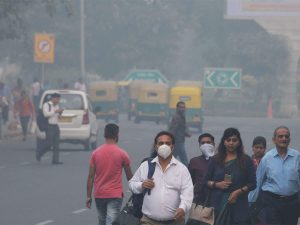
The Minister of Environment, Forest and Climate Change, while speaking at the International Day of Clean Air For Blue Skies, informed that the number of cities with improved air quality had increased.
- On the occasion, he also inaugurated the first functional Smog Tower at Anand Vihar in Delhi and launched Portal for Regulation of Air-pollution or ‘Prana’.
- Earlier, a Smog Tower was installed in Delhi’s Connaught Place and India’s Tallest Air Purifier was also inaugurated in Chandigarh.
Key Points
Air Quality Status:
- In 2020:
- Cities with improved air quality had increased to 104 in 2020 from 86 in 2018.
- From 2015-2019:
- Particulate Matter (PM) 10 levels: 23 cities marking a “decreasing trend”, 239 cities a “fluctuating trend” & 38 cities an “increasing trend”.
- PM 2.5 levels: 11 cities showed a decreasing trend, 79 cities a fluctuating trend and 9 cities an increasing trend.
Shikshak Parv 2021:
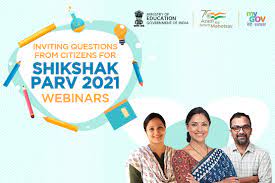
The Shiksha Parv is being celebrated by the Ministry of Education from 5th-17th September to recognize the contributions of teachers and to take New Education Policy (NEP) 2020 a step forward.
- The Prime Minister launched multiple key initiatives in the education sector on the occasion.
Five Initiatives Launched:
Indian Sign Language Dictionary:
- It was launched for the Children and persons with hearing impairments. It has 10,000 words in it.
Talking Books:
- These are audiobooks for the visually impaired.
School Quality Assessment and Accreditation Framework (SQAA):
- SQAA is a quality initiative proposed by the Central Board of Secondary Education (CBSE) to provide global parameters of attainment as standards in schools affiliated to it.
- It would address the deficiency of the absence of a common scientific framework for dimensions like curricula, pedagogy, assessment, infrastructure, inclusive practices and governance process.
NISHTHA Teachers’ Training programme for NIPUN Bharat:
- National Initiative for School Heads’ and Teachers’ Holistic Advancement (NISHTHA) is a capacity building programme for improving the quality of school education through integrated teacher training.
- NIPUN (National Initiative for Proficiency in Reading with Understanding and Numeracy) Bharat Scheme was launched to create an enabling environment to ensure universal acquisition of foundational literacy and numeracy, so that every child achieves the desired learning competencies in reading, writing and numeracy by the end of Grade 3, by 2026-27.
Vidyanjali 2.0 Portal:
- For facilitating education volunteers, donors and CSR (Corporate Social Responsibility) contributors for school development.
- Vidyanjali Scheme is one of the innovative schemes that focus towards the improvement of literacy by offering volunteer teachers in government schools. It was launched in 2017.
Sustainable Development Goal (SDG) 12:

India’s progress in regard to the Sustainable Development Goal (SDG) 12 is fair enough but not satisfactory.
- SDG12 aims at ensuring responsible consumption and production patterns everywhere in the world.
- Sustainable consumption and production refers to “the use of services and related products, which respond to basic needs and bring a better quality of life while minimizing the use of natural resources and toxic materials as well as the emissions of waste and pollutants over the life cycle of the service or product so as not to jeopardize the needs of future generations”.
About SDG 12:
- Halving global food waste per capita and ensuring the efficient and sustainable use of natural resources by 2030.
- Fighting pollution, reducing the overall waste generation, and improving the management of chemicals and toxic wastes.
- Supporting companies’ transition to green infrastructures and practices.
- Making sure everyone everywhere is fully informed of ways to live in harmony with nature and eventually adopts thoughtful habits.
Deepor Beel: Eco-Sensitive Zone:
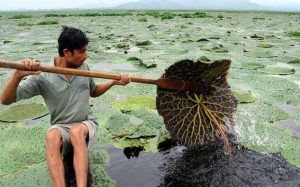
The Ministry of Environment, Forest and Climate Change (MoEFCC) has notified the Eco-sensitive zone of the Deepor Beel Wildlife Sanctuary (Assam).
- Earlier, Kaziranga National Park became the first in the country to use satellite phones and Dehing Patkai and Raimona were designated as National Parks.
Deepor Beel:
- It is one of the largest freshwater lakes in Assam and the State’s only Ramsar site besides being an Important Bird Area by Birdlife International.
- It is located towards the southwest of Guwahati city, Assam and is the erstwhile water channel of River Brahmaputra.
- The lake expands up to 30 sq. km in summer and reduces to about 10 sq. km in the winter. The wildlife sanctuary measures 4.1 sq. km within this wetland (beel).
- It constitutes a unique habitat for aquatic flora and avian fauna.
- It has both biological and environmental importance besides being the only major storm-water storage basin for Guwahati city.
- It provides a means of livelihood for a number of local families.
- Recently, six young girls from the fishing community from Assam have developed a biodegradable and compostable yoga mat called ‘Moorhen Yoga Mat’.
Concerns:
- It’s water has become toxic and it has lost many of its aquatic plants that elephants would feed on.
- It has for decades been threatened by a railway track — set to be doubled and electrified — on its southern rim, a garbage dump, and encroachment from human habitation and commercial units.
Impact Of Climate Change On El Niño-Southern Oscillation:

There is a growing body of research suggesting that climate change can cause extreme and more frequent El Niño and La Niña events.
- A study was conducted recently on this using one of South Korea’s fastest supercomputers,
Findings of the latest study:
- Increasing atmospheric carbon dioxide can cause a “weakening of future simulated ENSO sea surface temperature variability.”
- Future El Niño events will lose heat to the atmosphere more quickly due to the evaporation of water vapour.
- In the future there will be a reduced temperature difference between the eastern and western tropical Pacific, inhibiting the development of temperature extremes during the ENSO cycle.
- Also, there can be a weakening of tropical instability waves in the projected future, which can cause a disruption of the La Niña event.
El Niño and La Niña:
- They are two natural climate phenomena occurring across the tropical Pacific Ocean and influence the weather conditions all over the world.
- While the El Niño period is characterised by warming or increased sea surface temperatures in the central and eastern tropical Pacific Ocean, a La Niña event causes the water in the eastern Pacific Ocean to be colder than usual.
- Together, they are called ENSO or El Niño-Southern Oscillation
Right To Sit To Be Mandated In Tamil Nadu:
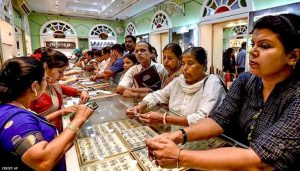
The Tamil Nadu government has tabled a Bill in the Legislative Assembly making it mandatory for establishments to provide seating facilities for employees. It is popularly being called the “Right to Sit”.
Right to Sit:
- It is aimed to benefit thousands of employees of large and small establishments, particularly those working in textile and jewelry showrooms.
- The bill mandates for every premises of establishments to have suitable seating arrangements for all employees so that they may take advantage of any opportunity to sit in the course of their work.
- The bill seeks to amend the Tamil Nadu Shops and Establishments Act, 1947, by adding a sub-section.
- Persons employed in shops and establishments in the State are made to stand throughout their duty time resulting in varied health issues.
- Most owners of shops and other retail outlets forbid women, the bulk of the shop workforce, to sit. Even leaning against a wall was punished.
- They had developed varicose veins and joint pain from standing.
- Right to Sit would avoid the ‘on their toes’ situation throughout the working hours.
GST Appellate Tribunal:
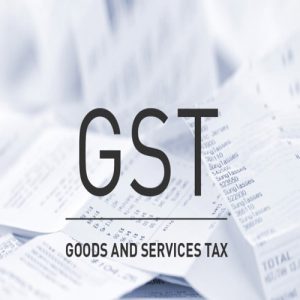
The Supreme Court has warned that the government had no option but to constitute the Goods and Services Tax (GST) Appellate Tribunal.
GST Appellate Tribunal:
- The GST Appellate Tribunal (GSTAT) is the second appeal forum under GST for any dissatisfactory order passed by the First Appellate Authorities.
- The National Appellate Tribunal is also the first common forum to resolve disputes between the centre and the states.
- It holds the same powers as the court and is deemed Civil Court for trying a case.
- Section 109 of the GST Act mandates the constitution of the Tribunal.
The GSTAT has the following structure:
- National Bench: The National Appellate Tribunal is situated in New Delhi, constitutes a National President (Head) along with 2 Technical Members (1 from Centre and State each).
- Regional Benches: On the recommendations of the GST Council, the government can constitute (by notification) Regional Benches, as required.
- As of now, there are 3 Regional Benches (situated in Mumbai, Kolkata and Hyderabad) in India.
- State Bench and Area Bench.
Pollen Calendar: Chandigarh

The Post Graduate Institute of Medical Education and Research (PGIMER) and Panjab University have created a Pollen Calendar (PC) for Chandigarh, arguably the first for any city in India.
- The pollen calendar was created after studying airborne pollen and its seasonal variations for about two years.
- PCs represent the time dynamics of airborne pollen present in a particular geographical area. They yield readily accessible visual details about various airborne pollen present throughout the year in a single picture.
- PCs are location-specific, with concentrations closely related to locally distributed flora.
- Europe, UK and the US are using regional pollen calendars in a big way to prevent and diagnose allergic rhinitis/hay fever and predict the timing and severity of the pollen season.
- Pollen grains are male biological structures with the primary role of fertilisation, but when inhaled by humans, they may strain the respiratory system and cause allergies.
- Pollen is released by plants, making millions of people suffer from hay fever, pollinosis and allergic rhinitis.
- About 20-30% of the population suffers from allergic rhinitis or hay fever in India, and approximately 15% develop Asthma.
- According to a study by PGIMER, Airborne pollen dominating seasons are spring and autumn with maximum species when the phenological and meteorological parameters are considered favorable for pollen grains’ growth, dispersion, and transmission.




